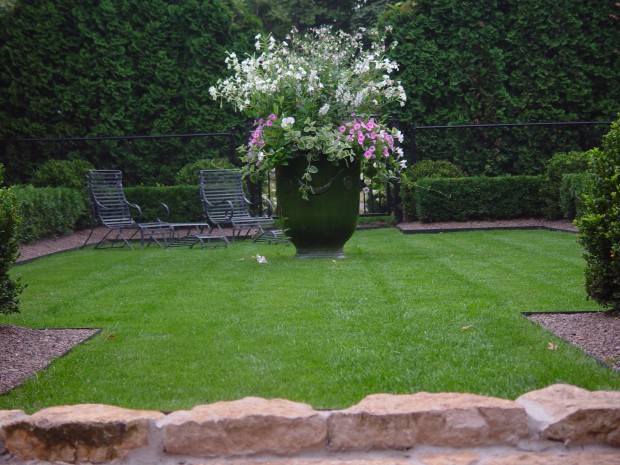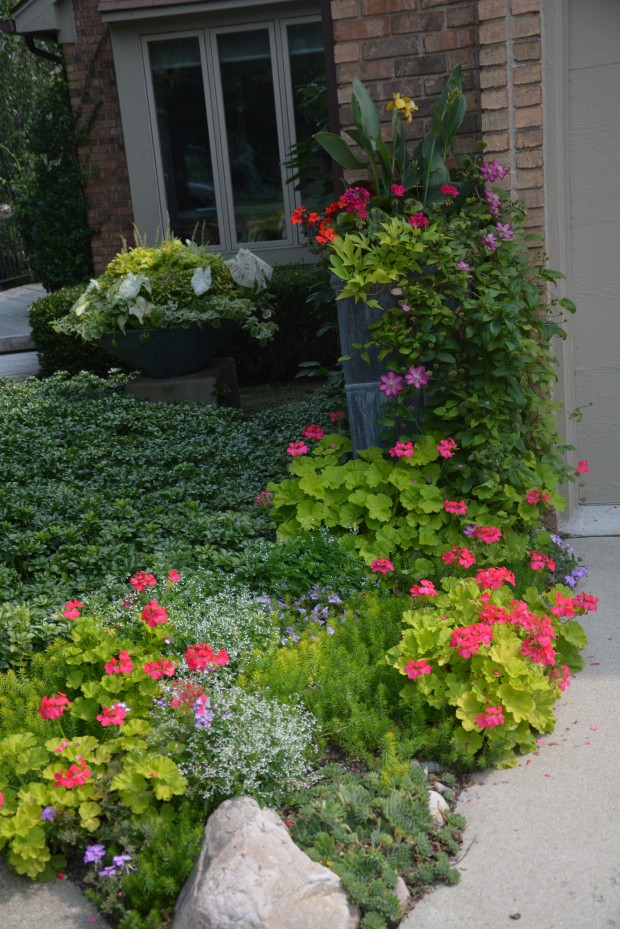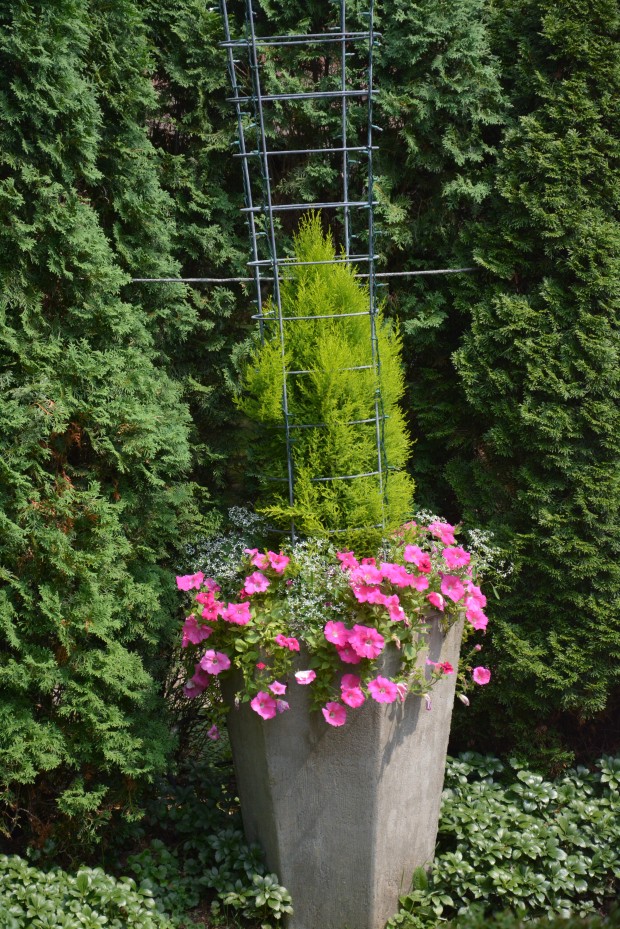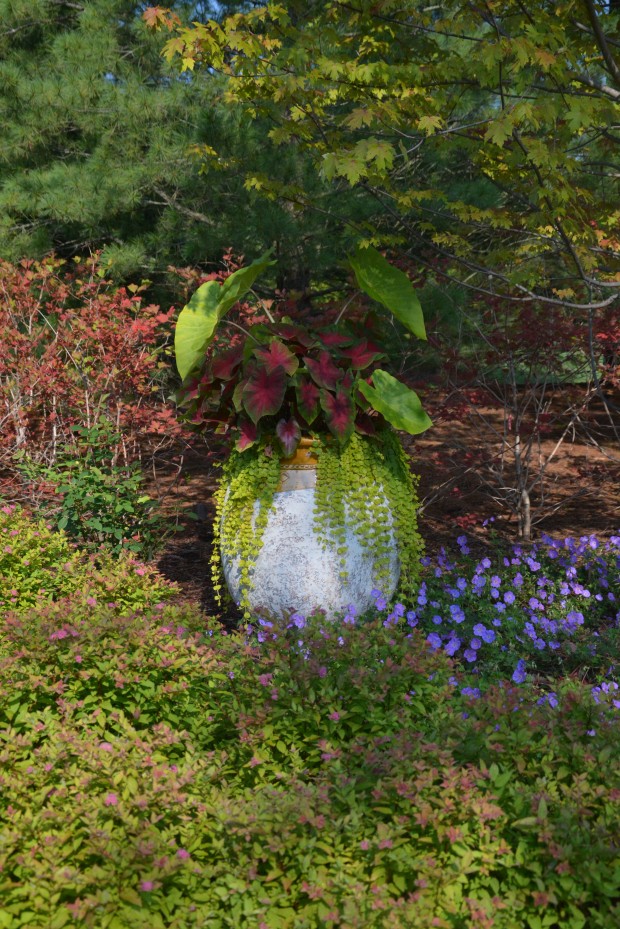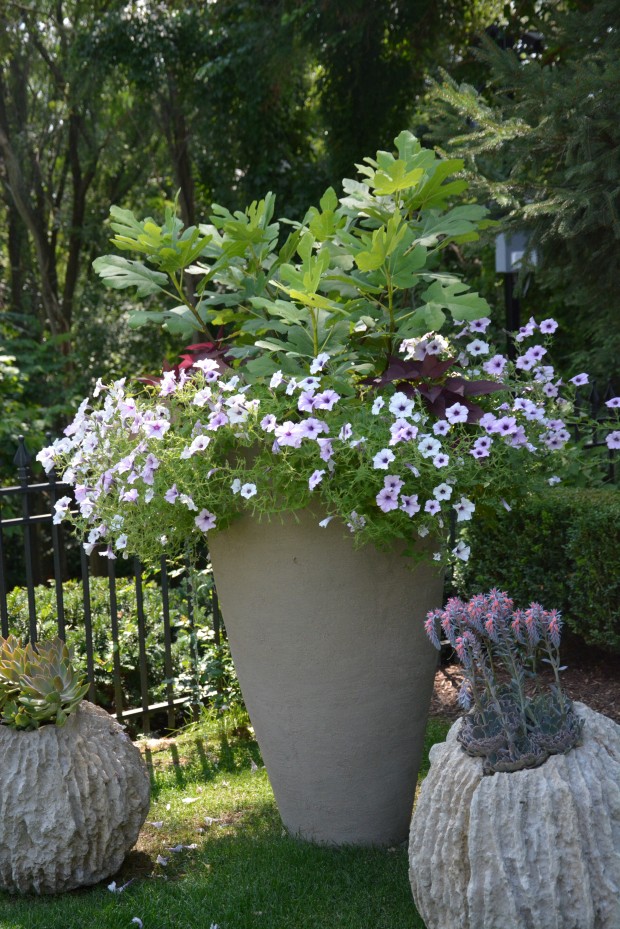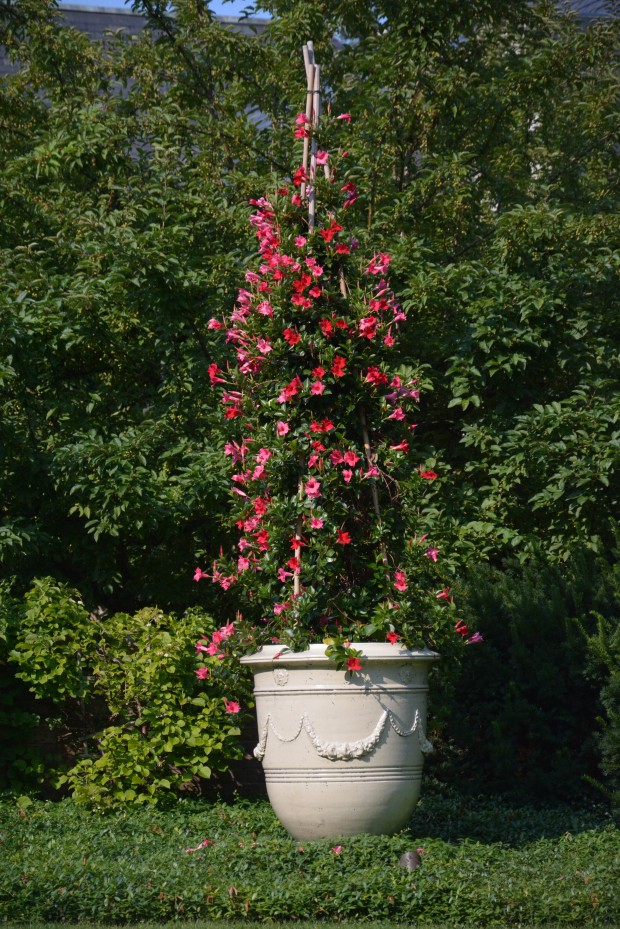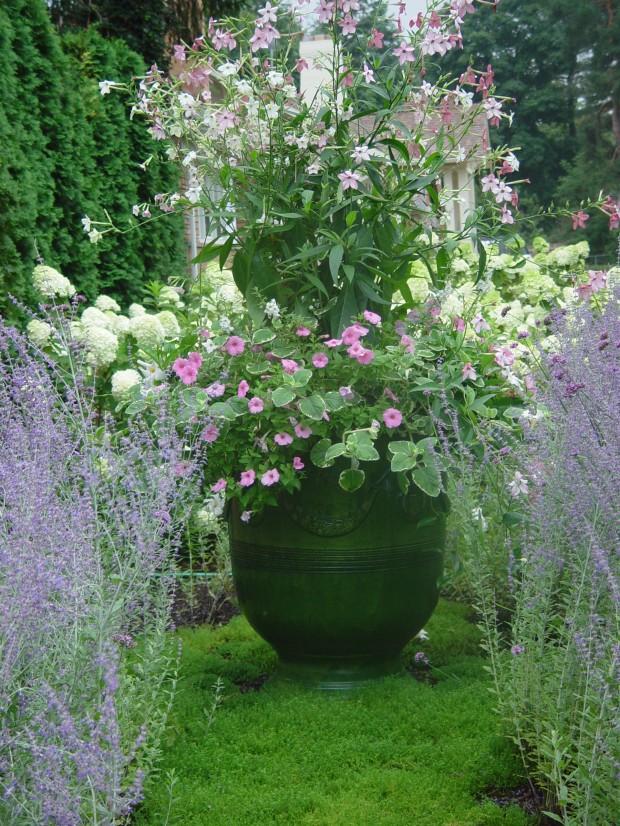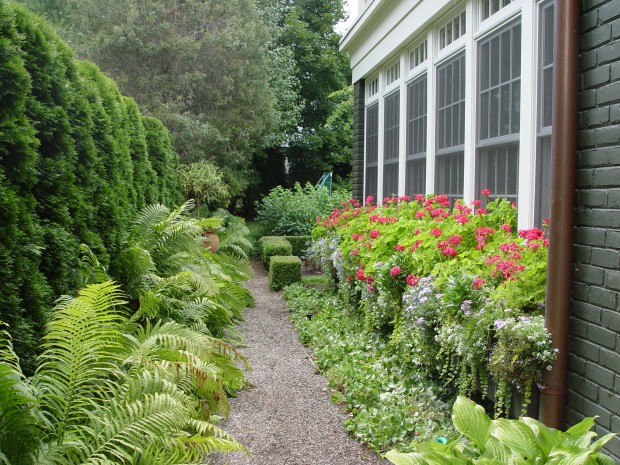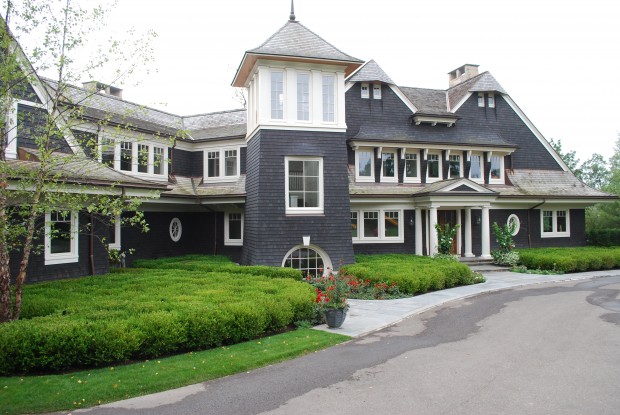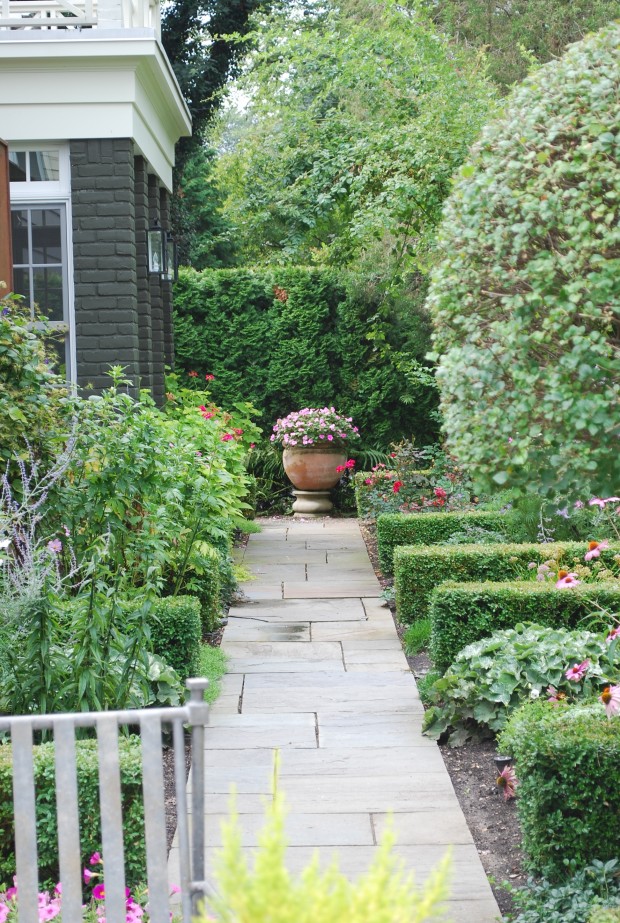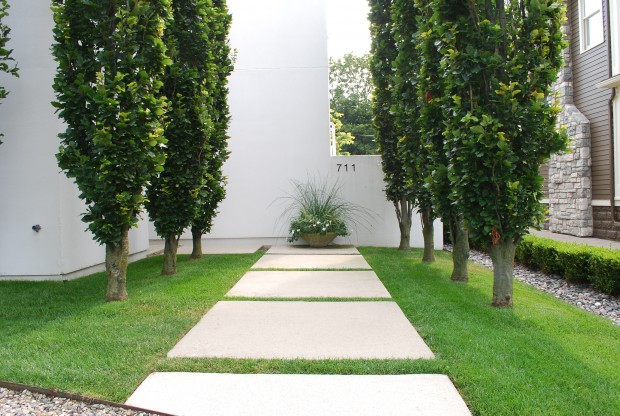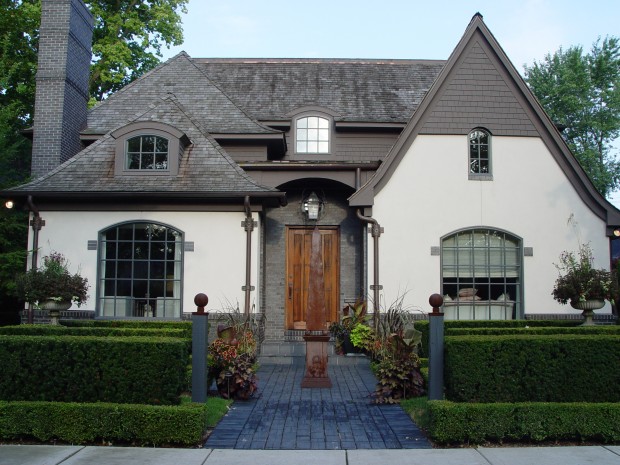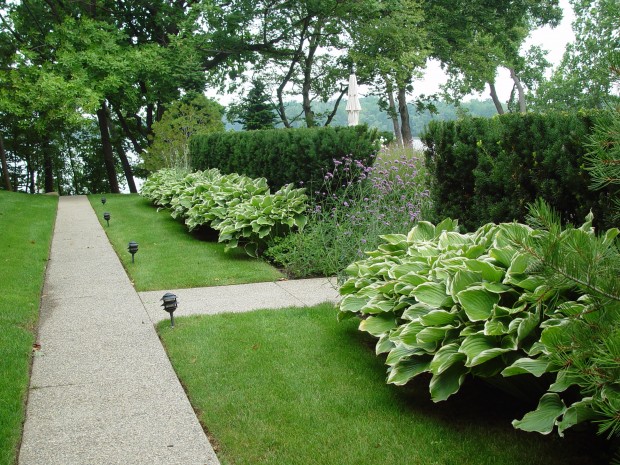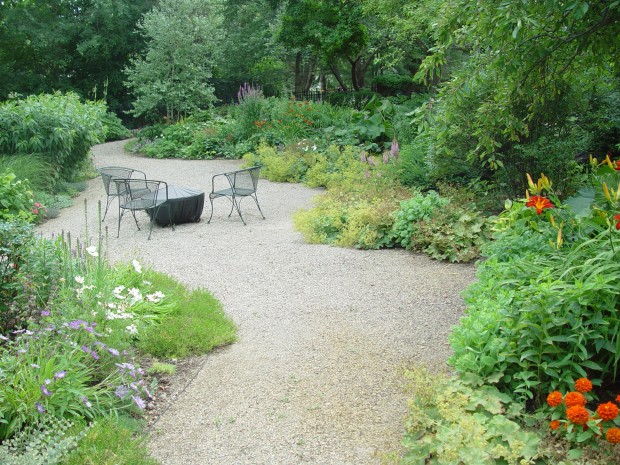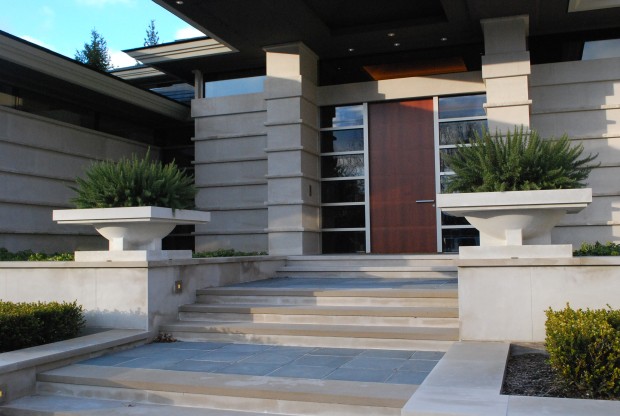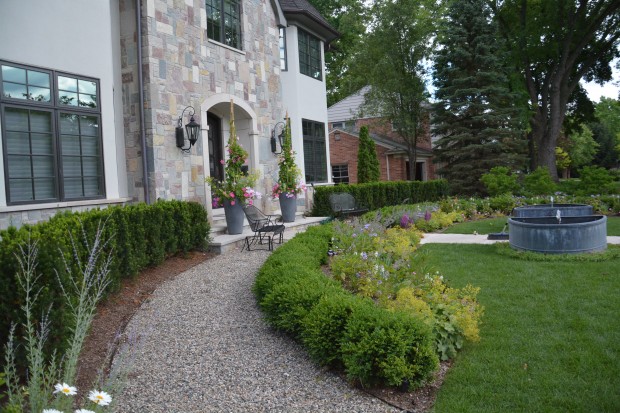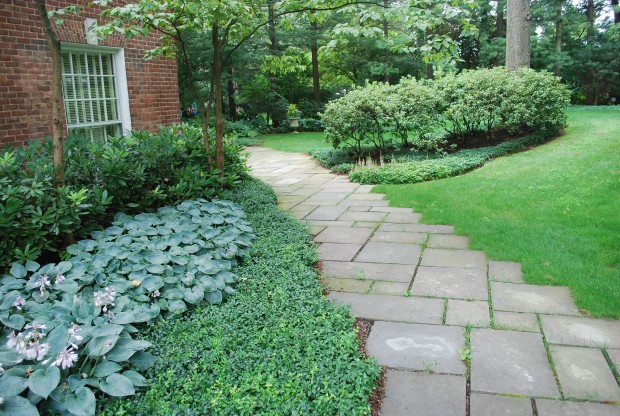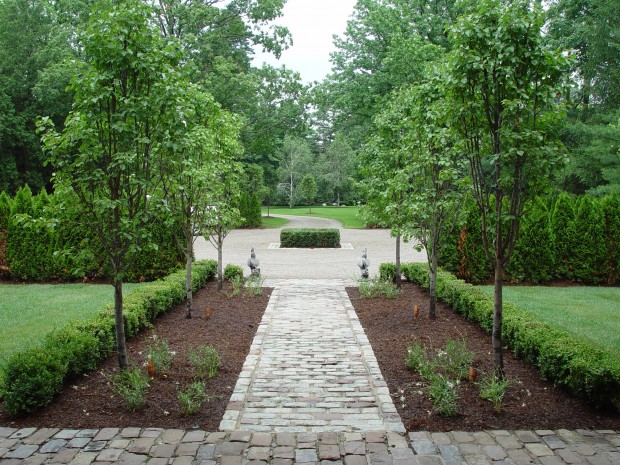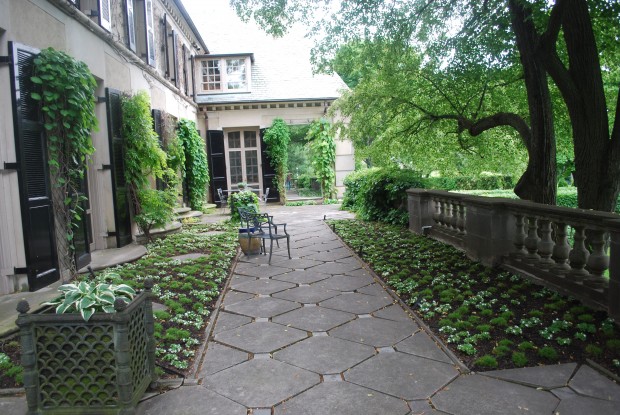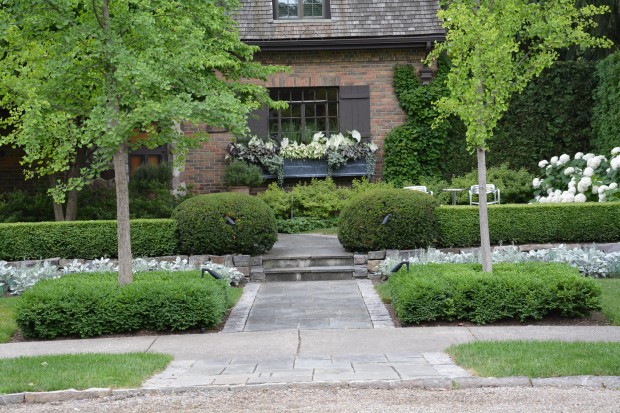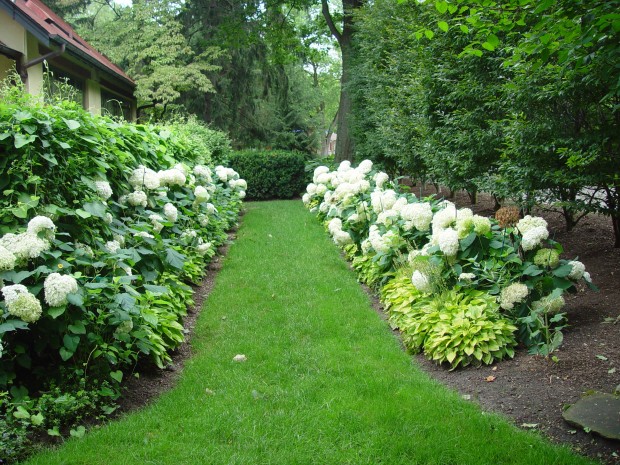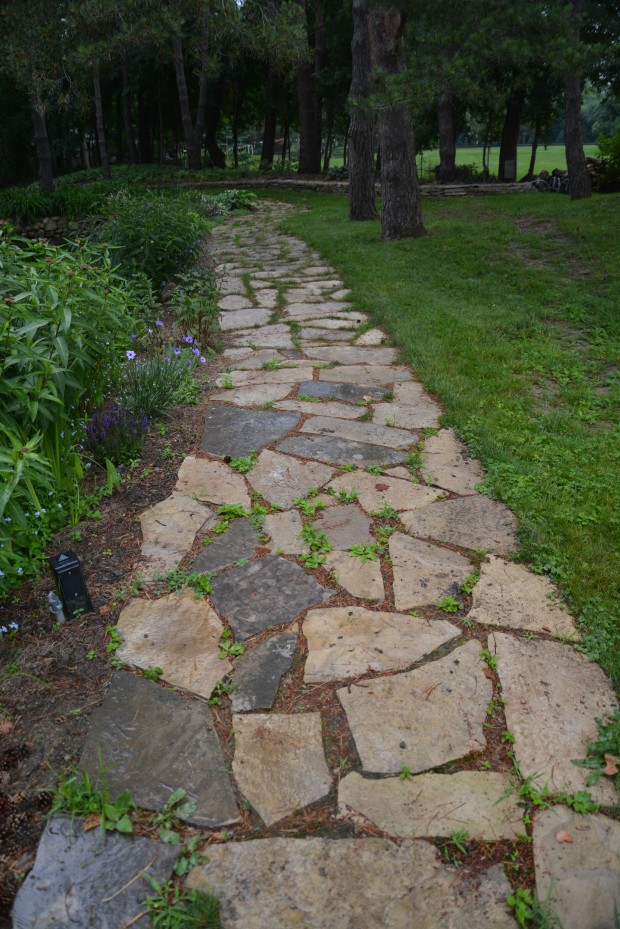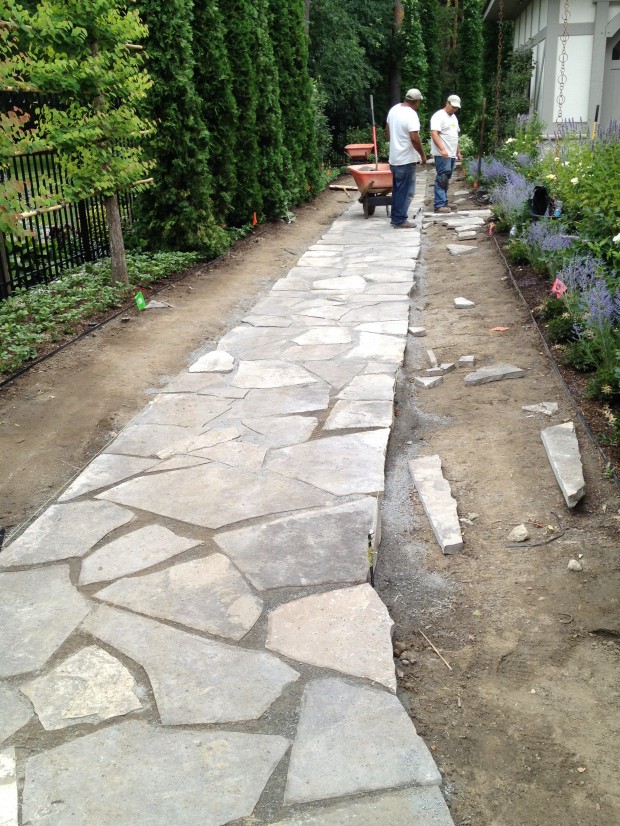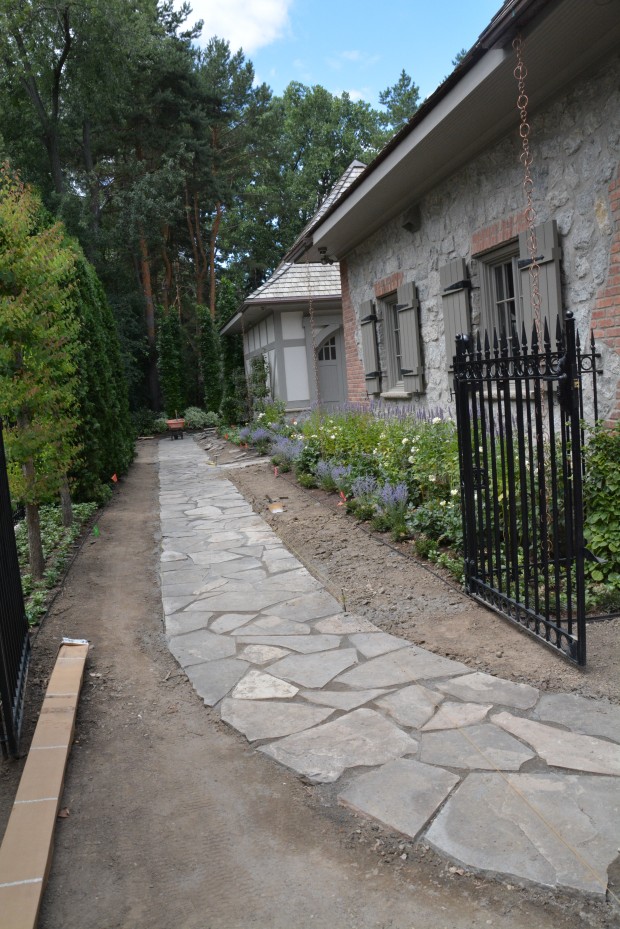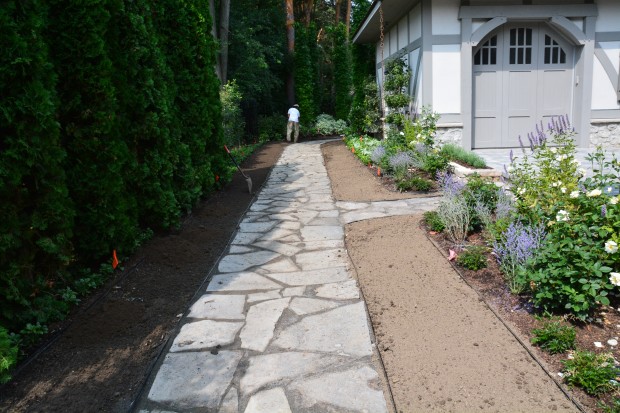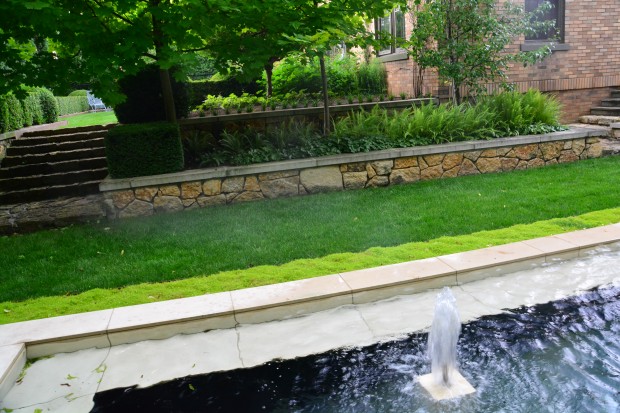 I have searched the picture files of my home garden in vain for a recent picture from just this angle. I have plenty of pictures of the ferns on the lower level, the staircase to the rose garden, the boxwood flanking the stairs, and the fountain. But nothing regarding how this change of level was handled. I suspect I have no pictures, as that change had stopped working. I had stopped seeing it.
I have searched the picture files of my home garden in vain for a recent picture from just this angle. I have plenty of pictures of the ferns on the lower level, the staircase to the rose garden, the boxwood flanking the stairs, and the fountain. But nothing regarding how this change of level was handled. I suspect I have no pictures, as that change had stopped working. I had stopped seeing it.
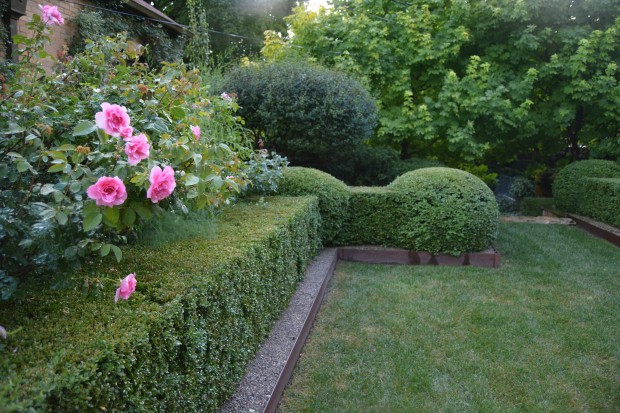 From the upper level, the dark mass behind the boxwood hedge and lilac on standard was a row of yews-taxus densiformis. Those yews were the lower part of a green wall that defined the upper level garden as visually separate from the lower level. The Princeton Gold maples shielded the view from one garden to the other on the upper level. I am not sure how long those yews have been there, but I am guessing 15 years anyway. They were a plain dark green backdrop for all else that was planted from both sides. Gardeners can be timid about dividing or walling off their landscape spaces. I see lots of landscapes that line up along the periphery of a property, but fewer that describe or make a statement about the interior spaces.
From the upper level, the dark mass behind the boxwood hedge and lilac on standard was a row of yews-taxus densiformis. Those yews were the lower part of a green wall that defined the upper level garden as visually separate from the lower level. The Princeton Gold maples shielded the view from one garden to the other on the upper level. I am not sure how long those yews have been there, but I am guessing 15 years anyway. They were a plain dark green backdrop for all else that was planted from both sides. Gardeners can be timid about dividing or walling off their landscape spaces. I see lots of landscapes that line up along the periphery of a property, but fewer that describe or make a statement about the interior spaces.
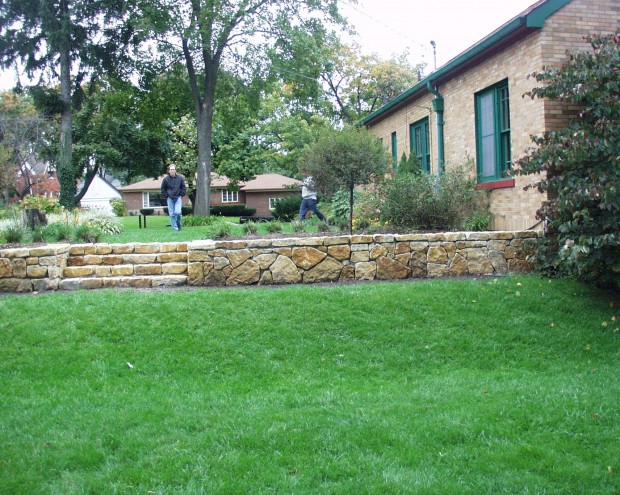 I do have pictures of that upper wall from the year 2000. It had just been finished. The Palabin lilacs on standard which were there when I bought the house were baby lilacs on standard. Still there was a considerably hilly drop to the lower level.
I do have pictures of that upper wall from the year 2000. It had just been finished. The Palabin lilacs on standard which were there when I bought the house were baby lilacs on standard. Still there was a considerably hilly drop to the lower level.
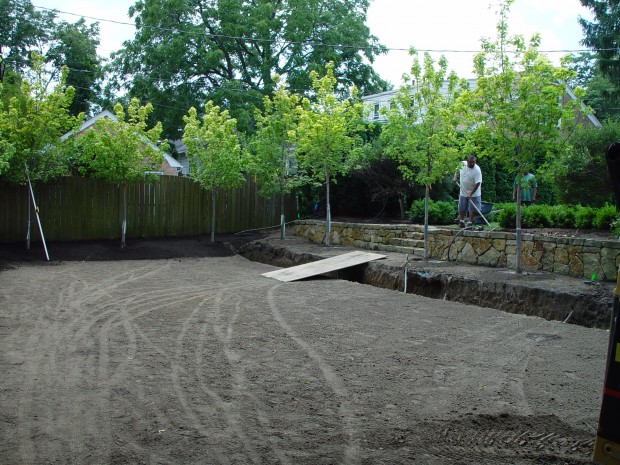 Two years later I added a second terrace. The lower level would be flat and navigable, as would be the upper level. The 1.5 inch caliper Princeton Gold maples were planted ahead of the construction of the lower wall. It was easier to roll the trees up to that level on a ball cart, as opposed to heaving them over a newly installed wall.
Two years later I added a second terrace. The lower level would be flat and navigable, as would be the upper level. The 1.5 inch caliper Princeton Gold maples were planted ahead of the construction of the lower wall. It was easier to roll the trees up to that level on a ball cart, as opposed to heaving them over a newly installed wall.
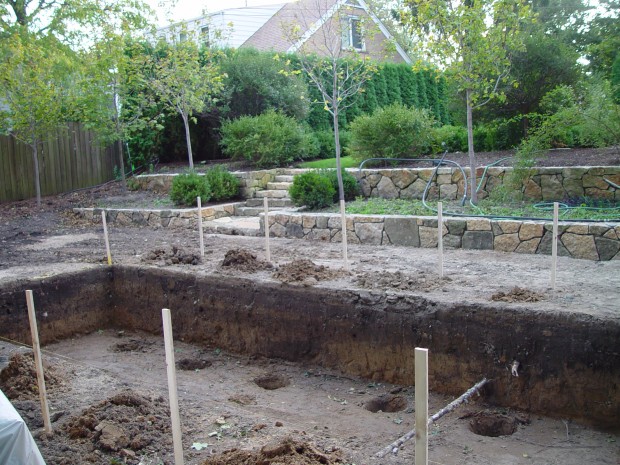 The boxwood got planted, the arborvitae on the upper level were growing away, and the fountain pool was under construction. Yet, I have no pictures of the yews that I planted on the edge of the upper level.
The boxwood got planted, the arborvitae on the upper level were growing away, and the fountain pool was under construction. Yet, I have no pictures of the yews that I planted on the edge of the upper level.
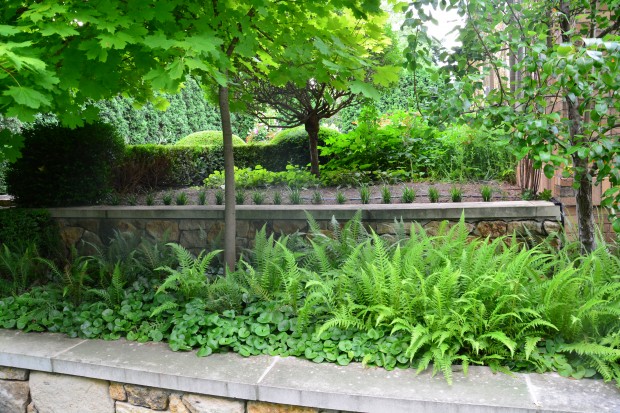 It was just 2 weeks ago that I took a good look at those yews. While they were pleasantly green from the upper level, they were bare twigs and tufts of green at the top from the lower level. As a stop gap measure, I planted a row of liriope spicata, in the hopes they would cover those bare legs. It took but a short while longer to realize that the liriope would languish in the intense shade, and I would still be looking at sticks. The yews had become too big, and worse yet, they were not a good candidate for renovation. The maples had grown considerably, and shaded the entire area. By this time I was more focused on this spot than I had ever been. It did not take long to dig those yews out.
It was just 2 weeks ago that I took a good look at those yews. While they were pleasantly green from the upper level, they were bare twigs and tufts of green at the top from the lower level. As a stop gap measure, I planted a row of liriope spicata, in the hopes they would cover those bare legs. It took but a short while longer to realize that the liriope would languish in the intense shade, and I would still be looking at sticks. The yews had become too big, and worse yet, they were not a good candidate for renovation. The maples had grown considerably, and shaded the entire area. By this time I was more focused on this spot than I had ever been. It did not take long to dig those yews out.
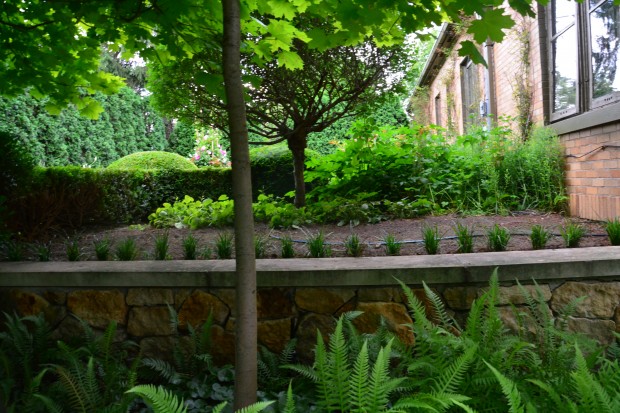 The light that came through once the yews were gone was considerable. Seeing into the upper garden from the lower was a shock-but a pleasant shock. As a landscape ages, it changes-that’s obvious. It’s the devil to predict how and when a garden will ask for a little renovation. But I can say having those yews gone was a breath of fresh air. For the first time in many years I am looking at some bare dirt in my landscape. What now? I am certain I do not want to plant back anything that will grow tall. I like the glimpses I am getting of the upper garden. It could be that any change from what once was will be welcomed.
The light that came through once the yews were gone was considerable. Seeing into the upper garden from the lower was a shock-but a pleasant shock. As a landscape ages, it changes-that’s obvious. It’s the devil to predict how and when a garden will ask for a little renovation. But I can say having those yews gone was a breath of fresh air. For the first time in many years I am looking at some bare dirt in my landscape. What now? I am certain I do not want to plant back anything that will grow tall. I like the glimpses I am getting of the upper garden. It could be that any change from what once was will be welcomed.
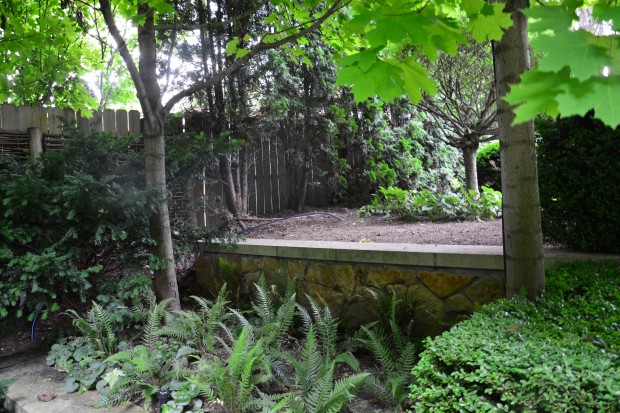 These ferns and European ginger on the south side of the stairs will benefit from the additional light. Both of these plants tolerate quite a bit of shade, but they will thrive with more light. The view of the neighbor’s fence behind an old arborvitae that has shed its lower branches is not so swell.
These ferns and European ginger on the south side of the stairs will benefit from the additional light. Both of these plants tolerate quite a bit of shade, but they will thrive with more light. The view of the neighbor’s fence behind an old arborvitae that has shed its lower branches is not so swell.
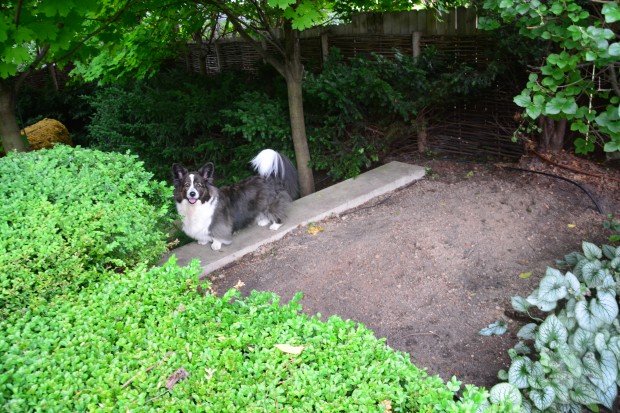 It seems like I have a chance here to create a new intermediary garden, between the two older ones. Milo went right to this spot first thing when he got home Friday. We are both looking at it with fresh eyes.
It seems like I have a chance here to create a new intermediary garden, between the two older ones. Milo went right to this spot first thing when he got home Friday. We are both looking at it with fresh eyes.
